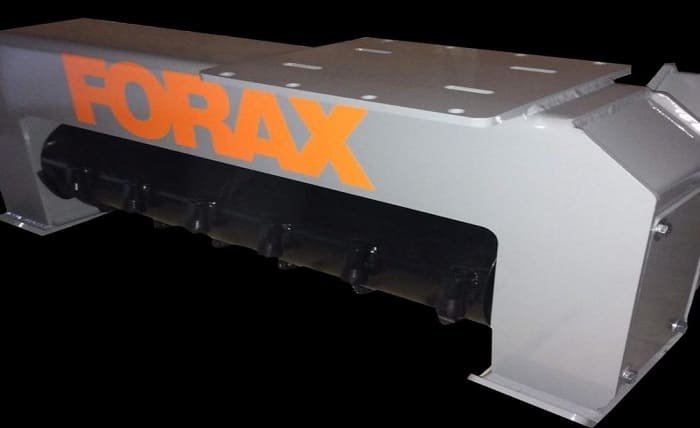Forax Equipment: Everything You Need to Know

Introduction
Forax Equipment is a crucial asset in various industries, offering powerful and versatile machinery for a range of applications. Whether you are involved in forestry, land clearing, or construction, understanding the different types of Forax Equipment available can significantly enhance your operational efficiency. In this guide, we will delve into the specifics of Forax Equipment, discussing its various types, applications, maintenance requirements, and much more.
The Different Types of Forax Equipment
Forax Equipment comes in various forms, each designed to meet specific needs. The most common types include mulchers, brush cutters, and tree shears. Mulchers are ideal for clearing vegetation and managing land, while brush cutters are perfect for trimming and cutting through dense foliage. Tree shears, on the other hand, are designed for felling trees and managing large forestry projects. Understanding these types of Forax Equipment is crucial for selecting the right machinery for your needs.
Applications of Forax Equipment in Forestry
In the forestry industry, Forax Equipment is indispensable. Mulchers are used to clear underbrush and prepare land for reforestation or construction projects. Brush cutters help maintain forest trails and manage invasive species, ensuring the health of the forest ecosystem. Tree shears are employed in timber harvesting, allowing for efficient and safe tree felling. The versatility of Forax Equipment makes it a vital tool in forestry operations.
Forax Equipment in Land Clearing and Construction
Beyond forestry, Forax Equipment is widely used in land clearing and construction. Land clearing requires robust machinery that can handle tough terrain and dense vegetation, and Forax Equipment fits the bill perfectly. Mulchers and brush cutters are often used to prepare land for construction by clearing unwanted vegetation and leveling the ground. In construction, Forax Equipment is employed in site preparation, ensuring that the land is ready for building projects.
The Importance of Choosing the Right Forax Equipment
Selecting the right Forax Equipment for your project is crucial for ensuring efficiency and safety. Factors such as the type of terrain, the density of vegetation, and the specific requirements of your project should all be considered. For instance, a mulcher might be more suitable for large-scale land clearing, while a brush cutter could be ideal for maintaining trails and smaller areas. Making the right choice can significantly impact the success of your project.
Maintenance Tips for Forax Equipment
Proper maintenance is essential for keeping Forax Equipment in top working condition. Regular inspections, lubrication of moving parts, and timely replacement of worn-out components are critical for prolonging the life of your machinery. Forax Equipment should also be cleaned after each use to prevent debris buildup, which can lead to mechanical issues. Following these maintenance tips ensures that your Forax Equipment remains reliable and efficient.
Safety Considerations When Using Forax Equipment
Safety is paramount when operating Forax Equipment. Users should always wear appropriate protective gear, including helmets, gloves, and eye protection. It is also essential to conduct a site inspection before using the equipment to identify potential hazards. Proper training in the operation of Forax Equipment is crucial, as these machines can be dangerous if not handled correctly. Adhering to safety protocols minimizes the risk of accidents and injuries.
Innovations in Forax Equipment Technology
The technology behind Forax Equipment has evolved significantly in recent years. Modern Forax Equipment is now equipped with advanced features such as GPS tracking, automated controls, and improved fuel efficiency. These innovations not only enhance the performance of the equipment but also make it easier to operate and maintain. Staying updated on the latest advancements in Forax Equipment technology can give you a competitive edge in your industry.
The Environmental Impact of Forax Equipment
The environmental impact of Forax Equipment is an important consideration, especially in forestry and land clearing operations. While these machines are essential for managing vegetation, they can also contribute to soil erosion and habitat disruption if not used responsibly. It is important to employ sustainable practices, such as selective clearing and minimizing soil disturbance, to mitigate the environmental impact. Forax Equipment can be a part of eco-friendly operations when used with care.
Forax Equipment and Industry Regulations
Understanding the regulations that govern the use of Forax Equipment is crucial for compliance and safety. Different regions may have specific laws regarding land clearing, forestry operations, and the use of heavy machinery. Ensuring that your use of Forax Equipment aligns with these regulations can prevent legal issues and ensure that your operations are conducted responsibly. Staying informed about industry regulations is an essential aspect of using Forax Equipment effectively.
Cost Considerations and Budgeting for Forax Equipment
Investing in Forax Equipment is a significant financial decision, and it is important to consider the costs involved. The initial purchase price, maintenance expenses, and potential repair costs should all be factored into your budget. It may also be worth considering whether to purchase new equipment or opt for used machinery, depending on your budget and the scale of your operations. Proper budgeting ensures that you get the most value out of your investment in Forax Equipment.
Future Trends in Forax Equipment
The future of Forax Equipment looks promising, with ongoing developments in technology and sustainable practices. As industries continue to evolve, so too will the demand for more efficient, eco-friendly, and technologically advanced Forax Equipment. Keeping an eye on these future trends can help you stay ahead of the curve and ensure that your operations are both effective and environmentally responsible.
Conclusion
Forax Equipment plays a vital role in various industries, from forestry to construction. Understanding the different types of equipment, their applications, and the importance of proper maintenance and safety can significantly enhance your operations. As technology continues to advance and environmental considerations become increasingly important, staying informed about the latest trends in Forax Equipment is essential. Whether you are a professional or an enthusiast, this comprehensive guide provides all the information you need to make the most of Forax Equipment.
FAQs
1. What are the most common types of Forax Equipment?
The most common types of Forax Equipment include mulchers, brush cutters, and tree shears, each designed for specific applications in forestry, land clearing, and construction.
2. How can I choose the right Forax Equipment for my project?
Selecting the right Forax Equipment depends on factors such as terrain, vegetation density, and project requirements. Understanding these elements can help you choose the most suitable machinery.
3. What maintenance is required for Forax Equipment?
Regular inspections, lubrication, cleaning, and timely replacement of worn-out parts are essential for maintaining Forax Equipment and ensuring its longevity.
4. What safety precautions should I take when using Forax Equipment?
Wearing protective gear, conducting site inspections, and receiving proper training are crucial safety measures when operating Forax Equipment.
5. How can Forax Equipment be used sustainably?
Employing practices such as selective clearing, minimizing soil disturbance, and staying informed about environmental regulations can help mitigate the environmental impact of Forax Equipment.





